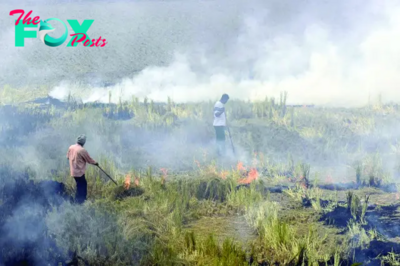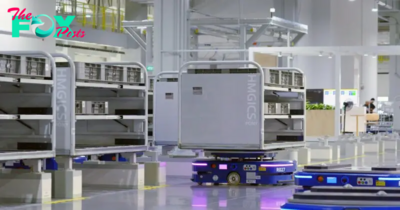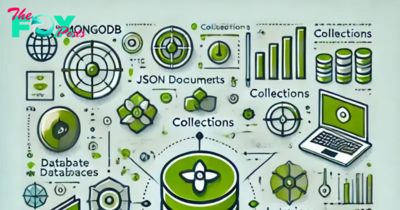Technology
Drones for First Responders
Drones are revolutionizing how first responders handle emergencies. They provide eyes in the sky, allowing police, firefighters, and medical teams to see dangerous situations before entering them. But starting a Drone as a First Responder (DFR) program isn’t just about buying drones.
It’s about integrating them into your team’s daily work. You need to know how to train people, get approvals, and choose the right tools. Experts can help every step of the way, from planning to execution. This article tells you how to make a Drones for first responders (DFR) program work for you.
Understand What Drones Can Do
Before you think about buying drones, you need to ask yourself: What problems are you trying to solve? Maybe it’s faster response times. Maybe it’s getting a clear view of a crime scene. Or it could be safer search and rescue operations. These devices can do all this.
But you need to know your priorities. They help you see dangerous situations from the sky. They give you the information you need fast. Whether it’s spotting a suspect or finding a lost hiker, they are tools for better decisions.
Stay Within the Law
You can’t just start flying drones everywhere. Laws are strict, and rightfully so. You’ll need approvals and waivers. Your team must follow regulations from the Federal Aviation Administration (FAA). They lay out rules for how high you can fly, where, and when. Getting permission isn’t hard, but it takes time and planning.
Make sure your drone operators understand all these rules. Safety is the top priority for your team and the people you serve. Proper licensing and compliance are essential for keeping your program running smoothly.
Pick the Right Drones
Not all drones are the same. Some are basic; others are packed with Technology that can make all the difference. You want the ones that fly themselves, so your team can focus on what’s happening on the ground. Autonomous drones are a Game-changer. They can patrol areas without needing constant control. This frees up your team’s hands and heads to handle other urgent tasks.
Look for drones with high-quality cameras. You need clear, detailed footage, especially in tough conditions. Those with night vision and thermal sensors are invaluable in low-visibility situations like fires or nighttime rescues. Choose devices built for tough environments—they should be ready to work in rain, wind, or heat.
Train Your Team Well
Drones are only as good as the people who use them. Training is critical. Your team needs to know how to fly them safely and efficiently. But it’s more than just flying. They also need to learn how to read the data and video the drones send back. Interpreting footage quickly and accurately can be the difference between life and death in emergency situations.
Start with the basics: launching, flying, and landing safely. Then move on to more advanced training, like using them in specific situations such as crowd control, building inspections, or disaster response. Keep the training ongoing—Technology evolves, and so should your team’s skills.
Build a Response Team
You’ll need a group of specialists to run your DFR program. This team will handle everything from drone maintenance to data analysis. They will become your go-to experts for aerial operations. Having dedicated personnel ensures consistency, safety, and efficiency.
They should be comfortable working with first responders. This means knowing the needs of police officers, firefighters, and paramedics. Their job isn’t just flying drones—it’s helping first responders use the aerial data to make quick, informed decisions.
Speed Up Response Times
The faster you get to a scene, the better. Drones can get there before people can. In cases of crime or natural disasters, they can fly ahead to give you an early look at what’s happening.
With drones in the air, you’ll know if a suspect is armed, or if a fire is spreading, all without putting anyone at risk. By sending these machines ahead, first responders can prepare with the right tools and strategies. It cuts down guesswork, improves efficiency, and saves lives.
Use Drones for Search and Rescue
In rescue missions, time is everything. When someone is lost or in danger, drones can cover the ground faster than human search teams. They can scan forests, mountains, or bodies of water with ease. They can even find people in the dark or difficult terrain with thermal imaging.
They help locate victims faster and safer. Rescuers no longer have to put themselves in harm’s way to search dangerous areas. These machines take that risk for them.
Get Expert Help
Launching a successful DFR program can be complicated. That’s where experts come in. Specialists can help you choose the right drones, navigate legal requirements, and train your team. They also provide ongoing support to keep your program running smoothly. With the right guidance, you’ll avoid common pitfalls and get the most out of your drones from day one.
Drones can change the way first responders work. They improve safety, speed, and situational awareness. But launching Drones for first responders program isn’t just about the Technology. It’s about planning, training, and legal compliance. Experts can help you get started and stay on track. When done right, they become an essential part of your team, keeping people safe and reducing risk every day.
-

 Technology2h ago
Technology2h agoLahore's smog: lessons to be learnt | The Express Tribune
-

 Technology1d ago
Technology1d agoBreaking up Google? What a Chrome sell-off could mean for the digital world | The Express Tribune
-

 Technology2d ago
Technology2d agoAI harm is often behind the scenes and builds over time – a legal scholar explains how the law can adapt to respond
-

 Technology2d ago
Technology2d agoNewborn planet found orbiting young star, defying planet formation timeline | The Express Tribune
-

 Technology2d ago
Technology2d agoAwkwardness can hit in any social situation – here are a philosopher’s 5 strategies to navigate it with grace
-

 Technology2d ago
Technology2d agoNo need to overload your cranberry sauce with sugar this holiday season − a food scientist explains how to cook with fewer added sweeteners
-

 Technology2d ago
Technology2d agoTeslas are deadliest road vehicles despite safety features: study | The Express Tribune
-

 Technology3d ago
Technology3d agoThere Is a Solution to AI’s Existential Risk Problem



























